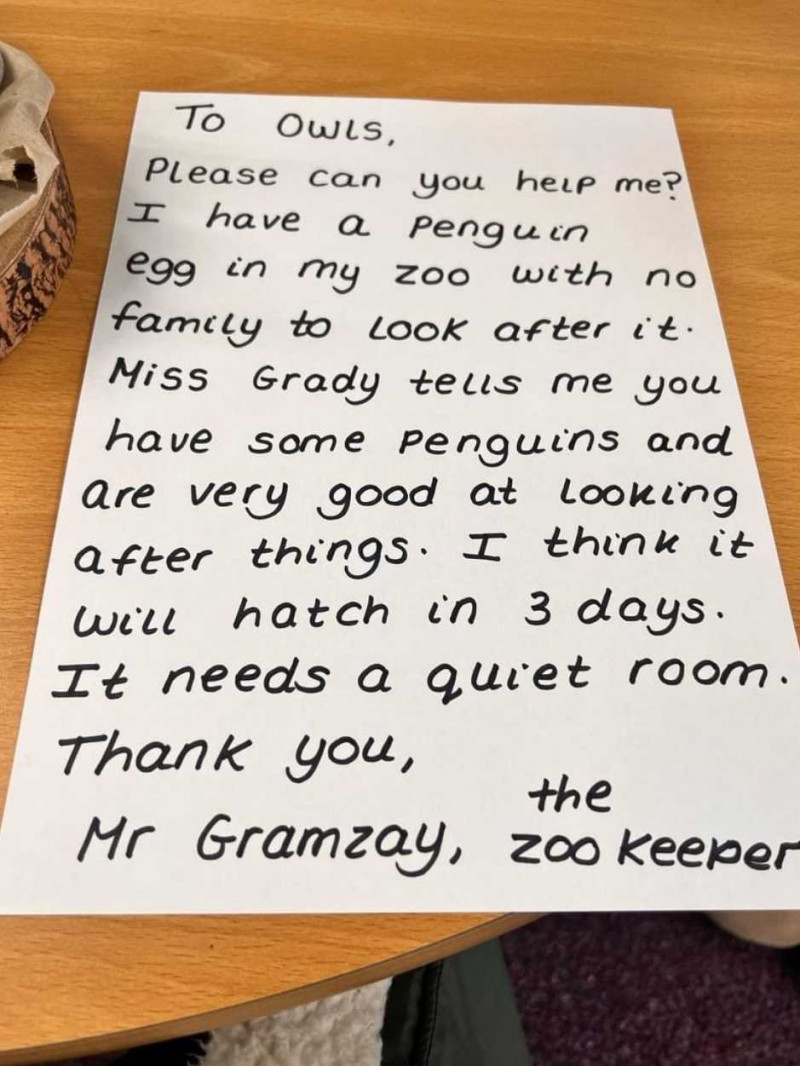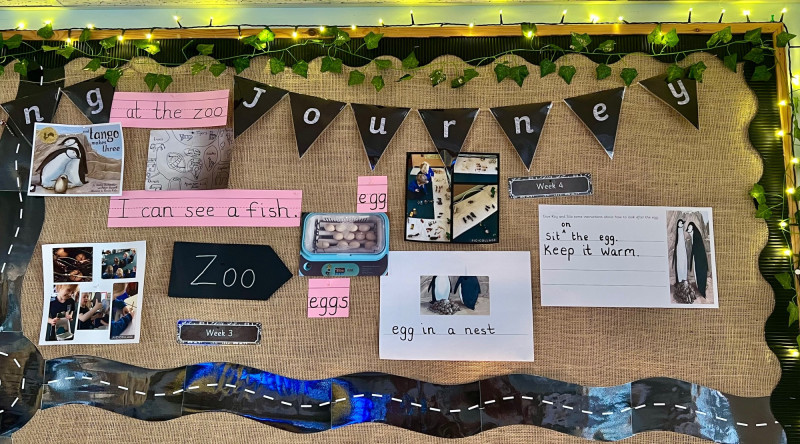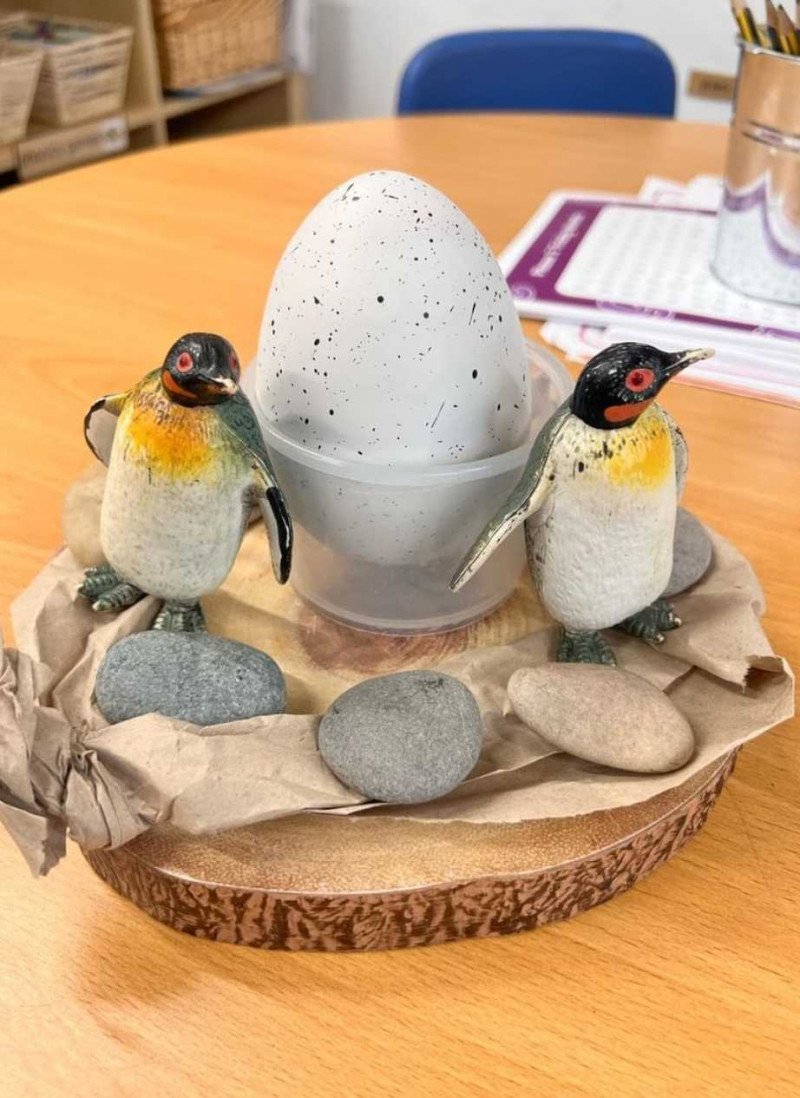Posted on: 11/06/2025
Today, teachers have much more choice, with bookshops and libraries stocking a growing selection of inclusive children’s literature, despite ongoing backlash. In contrast, back in 2005, high-quality children’s books that depicted same-sex parenting were few and far between. This is what made And Tango Makes Three so important. The book does not ask us to reach definitive conclusions about penguin sexuality, but rather to connect with a loving, non-traditional family - something that was largely missing at the time.
I want to begin with Dan’s reflections, because they capture everything we love about And Tango Makes Three here at Literacy Tree, whilst also providing a personal perspective on the book’s impact. Now, more than ever, we should be teaching with Tango, and taking small but significant steps in the classroom to shape the future Dan dreams of for his sons and pupils.


“On the surface, it's a sweet tale about animals. But beneath that, it’s something much more powerful: a story about love, family, and belonging.
I remember the first time I read this book. It was before my husband and I adopted our two wonderful boys. At the time, it felt like a small beacon of hope — a quiet reassurance that our future family, though not yet formed, would have a place in the world of children’s literature. Now, reading it with our sons, it's even more profound. They see a story that mirrors their own — two dads raising a child with love, care, and joy.
In a world that often tries to define what a "normal" family should look like, And Tango Makes Three gently pushes back. It doesn’t shout. It doesn’t argue. It simply tells the truth: that families come in many forms, and that love is what makes a family whole.
For schools, this book is more than a story. It's an opportunity — to show representation, to open up conversations, to teach acceptance without judgment. When children read stories like this in the classroom, they learn that every family is valid. They learn empathy. They learn that difference is not something to be feared, but something to be understood and respected.
And for children with families like mine, it offers something incredibly powerful: visibility. It tells them, you belong here. It tells them, your story matters.
Twenty years on, And Tango Makes Three is still a must-read. Not just for children with two mums or two dads — but for all children. Because when we share stories that reflect the rich diversity of the world around us, we raise kinder, more accepting humans.
And that’s a future I want for my boys — and for everyone’s children.”
As Dan points out, And Tango Makes Three is a quietly powerful read.
When Zookeeper Mr Gramzay notices Roy and Silo’s closeness, he says to himself: ‘They must be in love’. This matter-of-fact observation stood out to me for its simplicity. Mr Gramzay does not express amusement, judgement or panic that the penguins are behaving differently. He merely recognises their connection, later ‘hatching’ (pun intended) a plan to give them an egg of their own. The book is full of these subtle affirmations of Roy and Silo’s relationship, from Gramzay’s observation, to children cheering excitedly to see the first penguin chick with two daddies, to the very last line:
“There they snuggled together and, like all the other penguins in the penguin house, and all the other animals in the zoo, and all the families in the big city around them, they went to sleep”.
Whilst Roy and Silo’s story might have been a novelty at the zoo, there’s nothing particularly novel about their love. As they snuggle up for sleep, just like so many other couples (penguin and human), we are reminded that love really is a universal language, regardless of who it is shared between.


This heartwarming story was the American Library Association’s most frequently challenged book between 2006 and 2010. (1) And between 2010 and 2019? Tango still came sixth. (2) Whilst most Literacy Tree schools are based here in the UK, we are conscious of the harms that not only censorship, but also non-inclusive curriculums, can inflict on children who do not see themselves (or their families) represented. And conscious of the inescapable correlation between rhetoric across the pond and here in Britain.
In recent years, there has been a troubling surge in hostility towards the Queer community, at times making it feel as though progress has been reversed rather than advanced. Inflammatory language like ‘sexualisation’ and ‘indoctrination’ are weaponised against children’s books with Queer representation, under the guise of protection. However, in the words of our Co-CEO, Anthony, ‘What are they trying to protect children from?’
Developing empathy? Embracing difference? Feeling seen?
As Anthony explains, ‘Innocence isn’t preserved by teaching children ignorance, hatred and fear. If we want to truly protect children and preserve their innocence, then we must teach them about the existence of LGBTQ+ people. Many of our children will grow up to be part of the Queer community and so we must protect them from being subject to further bullying and oppression.’ (3)

Our Writing Root for the book, much like the text itself, nurtures compassion and empathy alongside literacy development, teaching young readers that families can come in all shapes and sizes.
In Session 4 of the planning sequence, children come up with answers to the question ‘Why might Roy and Silo have wanted an egg?’. Through oracy, pupils are encouraged to place themselves in the shoes (or webbed feet) of the penguin protagonists. They then use an On the Dot or Not resource, deciding where to place different feelings that Roy and Silo might be experiencing: ‘left out’, ‘joyful’, ‘lonely’ and ‘excited.’
Later, in session 7, the class discovers something exciting… They enter school to find signs reading ‘Welcome Tango’ and ‘Shhh! Baby sleeping!’ Having empathised with Roy and Silo’s frustration earlier in the story, children are now also able to share in their excitement. This joyous moment provides an opportunity to write a congratulations card as a class and discuss the myriad forms family can take.
By teaching through a text, conversations feel organic, with children able to root thoughts and feelings in familiar characters and contexts. And Tango Makes Three provides a natural springboard for these discussions, but its value also lies in its lightness. What four-year-old won’t enjoy an illustrated tale about two penguins hatching, feeding and snuggling up with a fluffy chick named Tango?
Making your curriculum more inclusive doesn’t mean removing the fun or limiting yourself to heavier texts and topics; And Tango Makes Three is testament to this, providing much needed visibility for same-sex parenting, without skimping on the joy. Two decades on, Tango is still bringing care and compassion into the classroom, and we can’t wait to see what Literacy Tree schools do with it in years to come. 
More about Dan Taylor
"I am Assistant Principal at Yew Tree Primary Academy, with the responsibilities of leading whole school Curriculum, Assessment and English. I am also the Lead KS2 Moderator for Knowsley, as well as being a Literacy Tree Lead Teacher and a member of its advisory panel.
My main areas of interest are inclusive teaching and learning and children's literature. I am passionate about children being able to see themselves in books they read, because I believe representation is powerful. I have always admired the skill authors have to directly impact a reader in a single moment or leave a long-lasting impression. I hope to one day write my own children's book." (4)
References
1. ALA (2011) "And Tango Makes Three waddles its way back to the number one slot as America’s most frequently challenged book", American Library Association, 11 April. Accessed on 30/05/2025.
2. ALA (2020) "Top 100 Most Frequently Challenged Books: 2010-2019", American Library Association, 9 September. Accessed on 30/05/25.
3. Legon, Anthony (2024) "Why Pride is Still a Protest", Literacy Tree, 30 May, 2024. Accessed on 30/05/25.
4. Taylor, Dan (2025), "Dan Taylor: English Lead", Wade Deacon Trust. Accessed on 30/05/2025.
Posted in: Diversity | Book Choice | Curriculum